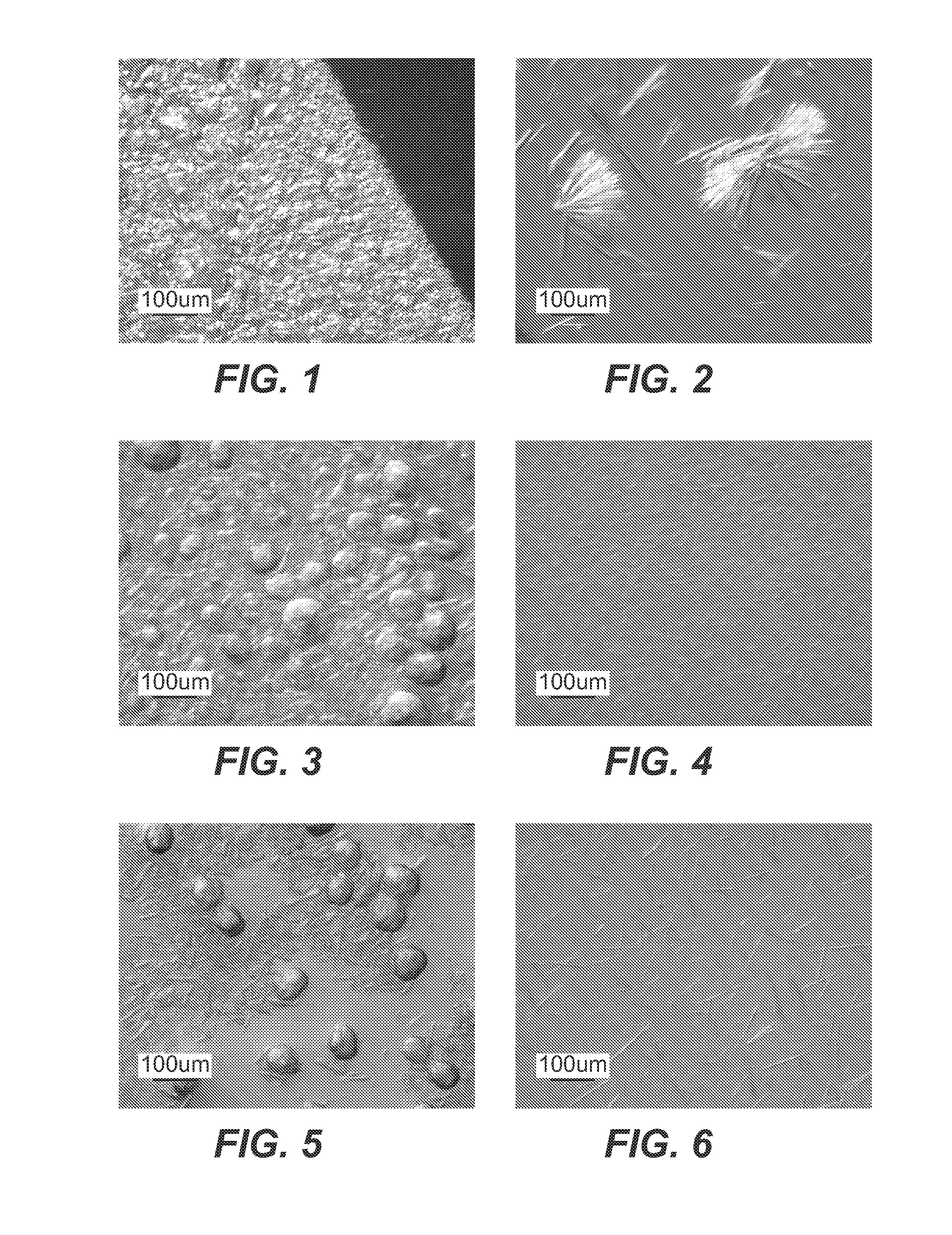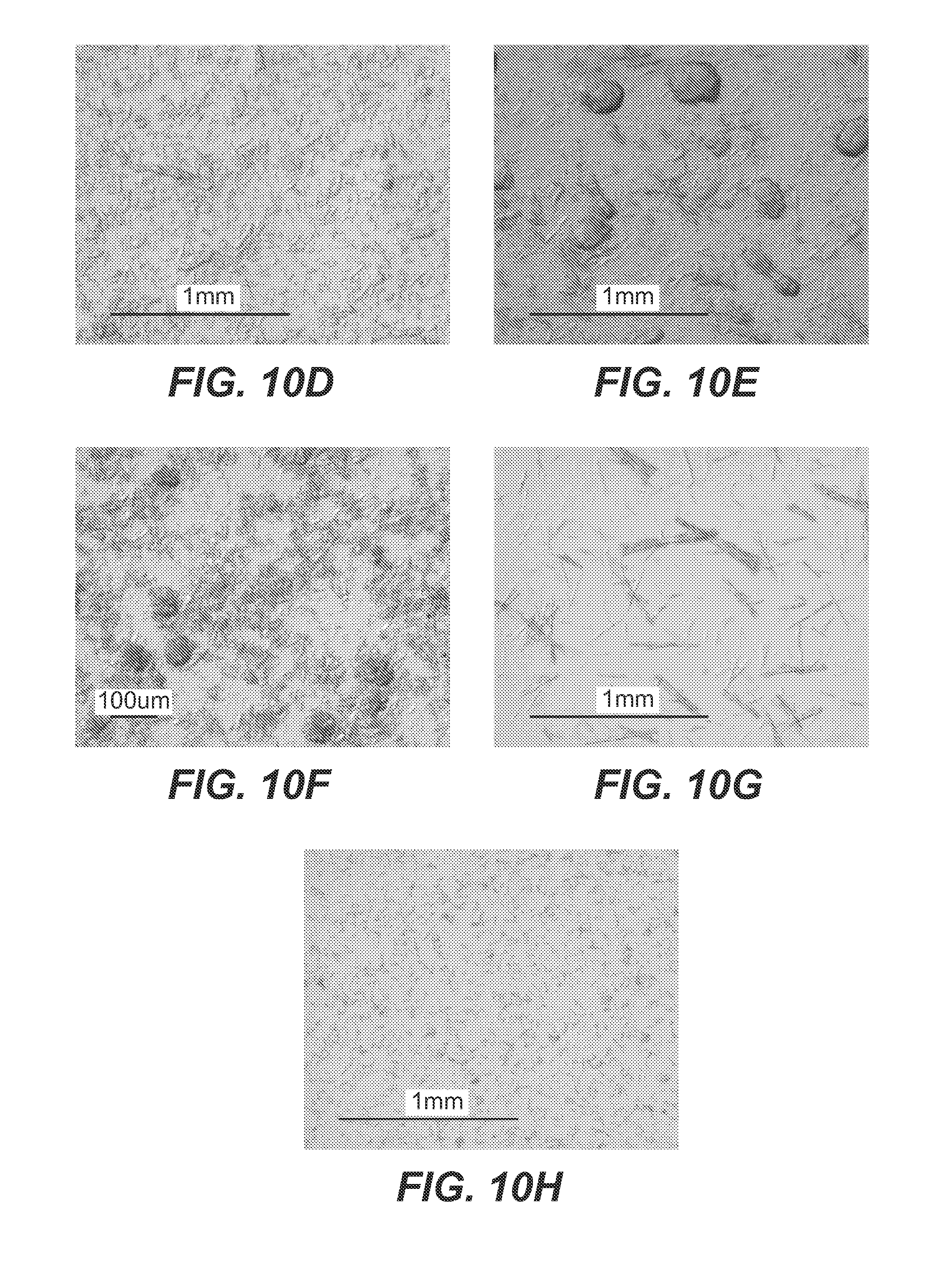Crystallization of Anti-cd20 antibodies
a technology of anti-cd20 and crystallization, which is applied in the field of crystallization of anti-cd20 antibodies, can solve the problems of reducing the yield of products, compromising efficiency, product yield or product quality, and the production of recombinant proteins such as antibodies, and achieves marked time and cost savings, eliminates chromatographic steps and their inherent limits of scalability, and improves product yield and product quality.
- Summary
- Abstract
- Description
- Claims
- Application Information
AI Technical Summary
Benefits of technology
Problems solved by technology
Method used
Image
Examples
example 1
Dialysis Crystallization Studies
1. Effect of PBS Concentration on Dialysis Crystallization of 2H7
[0206]Materials and Methods for Dialysis Studies
[0207]1. 150 mg / ml 2H7 drug substance
[0208]2. Pierce Slide-Alyzer® Dialysis Cassette, 30 kDa cutoff
[0209]3, PBS 20× and 1×
[0210]4. 1 L glass beaker
[0211]The glass beaker with stir bar was filled with 1 L PBS. Per vendor instructions, cassette was presoaked for 30 sec with PBS, then filled with 3 ml of 2H7 using an 18½ gauge needle. The cassette was floated in the beaker and the top was covered with aluminum Coil. Upon end of experiment, the cassette was removed, and any supernatant was removed with an 18½ gauge syringe. The cassette was then cut open along the edge of the membrane, and the remaining material was scrapped off the membrane film using a spatula.
[0212]20× and 1×PBS were used to make 0.1×, 1×, 10× and 20× solutions. 150 mg / ml bulk antibody (2H7 drug substance) was dialyzed into beakers containing each PBS concentration. All expe...
example 2
PBS Batch Studies
[0222]Following the dialysis studies described in Example 1, crystallization of 2H7 by direct mixing, also known at the batch method, was studied, using PBS as the precipitant. The experiments were designed to observe the reactions in direct mixing of lower concentrations of 2H7 with PBS at the three temperature points used in the dialysis experiments.
[0223]Batch Crystallization
[0224]In all batch crystallization studies, a 2H7 CD20 antibody solution was added to a 5-ml tube and allowed to equilibrate at the desired temperature. Precipitant solution (at the same temperature) was added to the tube, and the mixture was rotated continuously in the Lab Quake Tube shaker. At the end of the experiment, (typically 18+ hours), samples were observed under a microscope. The tubes were then centrifuged. The supernatant was sterile filtered and analyzed for antibody concentration.
[0225]Materials and Methods
[0226]1. 150 mg / ml 2H7 bulk
[0227]2. 2H7 buffer without Trehalose / Tween
[02...
example 3
Salt Screening Studies
[0248]The purpose of the salt screening studies was to identify other salts that could be used to induce 2H7 crystallization. The starting point was to look at individual salts that compose the PBS buffer. Following these, other salts with similar properties were tested.
[0249]Materials and Methods
[0250]1. Tris-HCl
[0251]2. Tris-Base
[0252]3. NaCl
[0253]4. Na2SO4
[0254]5. KCl
[0255]6. K2SO4
[0256]7. Na2HPO4
[0257]8. KH2PO4
[0258]9. 30 nM Sodium Acetate buffer
[0259]10. 2H7 drug substance
[0260]100 ml of 1M stock solutions were prepared in a 20 mM Tris-HCl buffer for each salt. These stock solutions were diluted to the desired concentrations for each experiment using 20 mM Tris-HCL. The final salt concentrations were half of the starting solutions as they were diluted 1:1 when combined with the 2H7 solutions. Five concentration dilutions of 2H7 bulk were made using Sodium Acetate buffer. Crystallization experiments were run at 37° C. using the same procedure as the bat...
PUM
| Property | Measurement | Unit |
|---|---|---|
| concentration | aaaaa | aaaaa |
| temperature | aaaaa | aaaaa |
| temperature | aaaaa | aaaaa |
Abstract
Description
Claims
Application Information
 Login to View More
Login to View More - R&D
- Intellectual Property
- Life Sciences
- Materials
- Tech Scout
- Unparalleled Data Quality
- Higher Quality Content
- 60% Fewer Hallucinations
Browse by: Latest US Patents, China's latest patents, Technical Efficacy Thesaurus, Application Domain, Technology Topic, Popular Technical Reports.
© 2025 PatSnap. All rights reserved.Legal|Privacy policy|Modern Slavery Act Transparency Statement|Sitemap|About US| Contact US: help@patsnap.com



